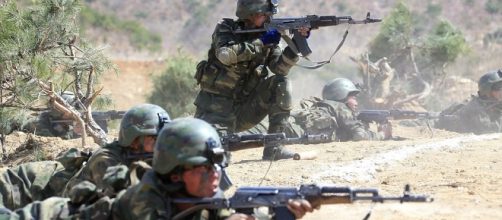Since Chinese president Xi Jinping visited the Mar-A-Lago resort to meet with President Trump over a week ago, it took about half a week before Xi would officially take action to side with the U.S. and sanction North Korea. On Face The Nation for April 9, U.S. Secretary of State Rex Tillerson said that both Xi and Trump agreed that the situation had become dangerous with North Korea and that something had to be done. Three days after that broadcast, Xi reportedly spoke with President Trump again and asked for calm between their Korean neighbor and the U.S.
but also made it clearer to the world that they had enforced their sanctions.
While enforcing sanctions would be a more diplomatic approach, President Trump has made it very clear that he means to take military action against North Korea, even with talks about assassinating Kim Jong-Un which was widely reported, but perhaps not willingly. To add, the Carl Vinson Strike Group has been added to the routine presence of America's Navy near North Korea which has triggered a response from the DPRK threatening to nuke American military sites and allies in the region. The Strike Group is just another hint at Pyongyang sent in addition to attack drones and the controversial THAAD missile defense system to be set up around South Korea, an agreement held over from the former Obama administration.
Options for dealing with North Korea
Sources: National Security Council has presented Pres. Trump with options to respond to NKorea's nuclear program. https://t.co/IVHfbPdTtc
— NBC Nightly News (@NBCNightlyNews) April 7, 2017
Before President Xi met with Trump, high-ranking intelligence and military officials revealed that they had accelerated options for President Trump for taking action on North Korea, one being the mentioned assassination but another would be to give South Korea nuclear missiles in order for them to respond directly. In a report by NBC News titled: “Trump's options for North Korea include placing nukes in South Korea”, is says that the United States removed all nuclear weapons from South Korea 25-years ago and that if the U.S.
were to give them back, they would be taken to the Osan Air Base, marking “the first overseas nuclear deployment since the end of the Cold War.”
During his campaign, Donald Trump suggested that he would like to sit and have a burger with North Korean leader Kim Jong-un and that he had a lot of respect for him to be able to lead a country at such a young age. But within a few months into his new administration – as Blasting News reported -- talks were no longer on the table after Trump canceled visas for North Korean diplomats. One intelligence official said in the article “that the U.S. was dealing with a “war today” situation” and that he doubted there was enough interest coinciding between China and America to find a more diplomatic solution.
The official's war mentality does, however, follow the same tone as President Trump's who confirmed it when he submitted his first budget proposal to Congress that showed he wanted to remove federal funding from non-military programs and pump billions into the military, which Blasting News reported on.
Regime change?
In another Blasting News report, it's mentioned that the Chinese like to not see another war in the Korean Peninsula as they would have to face the realities of a refugee crisis. This is further confirmed in the NBC News report where Mark Lippert, who is the former U.S. ambassador to South Korea, said that the Chinese tend to move in the opposite direction of supporting Regime Change or “decapitation” and that the U.S.
could expect to see less support from the Chinese government. But this forces the view that President Trump's military aggression against the DPRK and the reports that talks are no longer an option; that the U.S. is interested in doing anything more than conducting an attack. And despite Trump campaigning on the message of not getting involved in the world's conflicts, or to even instigate regime change, there's no indication that this would do anything but force one. It's been reported that Japan has also decided to join the fight and have sent their destroyers to join the U.S. military in the East China Sea.

